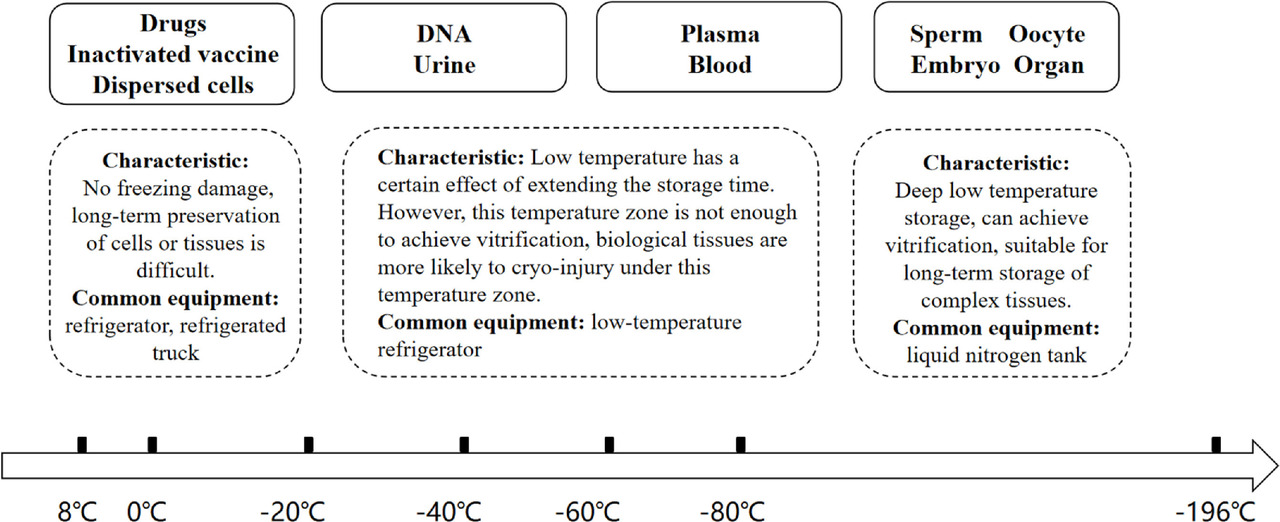A must-read in the IJR: a review of storage temperatures for biological material
To improve storage efficiency, the authors of a review article take stock of storage temperatures for biological material (cells, proteins, DNA, etc).
At low temperatures, biological and chemical reactions in living cells are dramatically reduced, leading to the long-term preservation of both cells and tissues. Different cooling rates and storage temperatures are required depending on cell characteristics and permeability. In an article published in the IJR, Guo S. & Zhang A. reviewed the optimal storage conditions for different biomaterials.
Chilled storage (2 to 8 °C)
This temperature range is used for the short-term storage of biological materials and long-term cold storage of some medicines.
For instance, a temperature range of 2–8°C is the ideal storage temperature for insulin. The shelf life of insulin is significantly reduced when stored at temperatures above 8°C. It is easy to inactivate insulin solution when stored below 2°C. Many patients with diabetes in impoverished areas do not receive effective treatment due to a lack of refrigerators.
No cryo-injury can occur since this temperature zone is above freezing temperature. However, this temperature range is only suitable for the short-term storage of certain cells such as platelet concentrates that are often transfused to normalise clotting. Chilled storage is not suitable to preserve cells or tissues.
Frozen storage (0 to –20°C) and ultra-low-temperature storage (–20 to –80°C)
As this temperature range is below 0°C, freezing can occur both inside and outside cells. Moreover, cells cannot achieve vitrification.
Vitrification refers to the creation of a noncrystalline glass-phase solid from a liquid and only occurs when pure water reaches a temperature of -138°C. At such low temperatures, water in the cell condenses into amorphous ice, causing little injury to cell membranes and effectively halting cellular processes. At temperatures above -138°C, cells cannot achieve vitrification, and are thus prone to cryogenic injury. Therefore, relatively few biologicals are stored at this temperature range for extended periods.
A temperature of -20°C is considered optimal for long-term DNA storage, which is critical in the fields of forensic and clinical research.
Since RH-negative blood groups are uncommon, blood freezing is necessary to avoid shortage. Red blood cells can be stored at about -80°C.
Cryopreservation (about –196 °C)
Liquid nitrogen temperature preservation is the process of supercooling biological materials and their cryoprotectants to the vitrification transition point at a rapid enough cooling rate to avoid the formation of ice crystals. Biomaterials can be stored for a longer time in a glassy state at a low temperature.
Organs, cells, and embryos can be stored for a long time in this temperature range.
The main issue with this method is toxic injury to biological materials brought on by high cryoprotectant concentrations, which typically occurs during the addition or removal of the protective agent at higher temperatures rather than during the cryopreservation stage.

Download the article in FRIDOC.
Source
Guo S., & Zhang A. (2023). Review of Different Temperatures for Biopreservation. International Journal of Refrigeration. https://doi.org/10.1016/j.ijrefrig.2023.10.014
